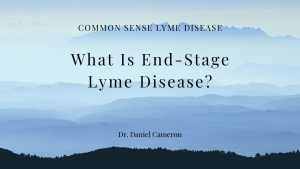
The ILADS 2014 treatment guidelines for Lyme disease identified a number of key issues in making these recommendations:
- Lyme disease is a complex illness and patients may experience both acute and persistent manifestations
- Persistent manifestations may produce profound quality-of-life impairments, yet the mechanisms that produce persistent manifestations are poorly understood.
- The available evidence regarding the treatment of known tick bites, erythema migrans (EM) rashes and persistent disease is limited.
- Grading of Recommendations Assessment, Development and Evaluation-based analyses found the evidence regarding these scenarios was of very low quality due to limitations in trial designs, imprecise findings, outcome inconsistencies and non-generalizability of trial findings.
- It is impossible to state a meaningful success rate for the prevention of Lyme disease by a single 200 mg dose of doxycycline because the sole trial of that regimen utilized an inadequate observation period and unvalidated surrogate end point.
- Success rates for treatment of an EM rash were unacceptably low, ranging from 52.2 to 84.4% for regimens that used 20 or fewer days of azithromycin, cefuroxime, doxycycline or amoxicillin/phenoxymethylpenicillin (rates were based on patient-centered outcome definitions and conservative longitudinal data methodology).
- In a well-designed trial of antibiotic retreatment in patients with severe fatigue, 64% in the treatment arm obtained a clinically significant and sustained benefit from additional antibiotic therapy.
- The optimal treatment regimen for the management of known tick bites, EM rashes and persistent disease has not yet been determined. Accordingly, it is too early to standardize restrictive protocols.
- Given the number of clinical variables that must be managed and the heterogeneity within the patient population, clinical judgment is crucial to the provision of patient-centered care.
- Based on the Grading of Recommendations Assessment, Development and Evaluation model, International Lyme and Associated Diseases Society recommends that patient goals and values regarding treatment options be identified and strongly considered during a shared decision-making process.
- Research is needed to better define the disease process, to identify variables associated with poor outcomes and to establish highly effective therapeutic regimens for known tick bites, EM rashes and persistent disease.
The ILADS guidelines are available through open access at https://informahealthcare.com/doi/full/10.1586/14787210.2014.940900


